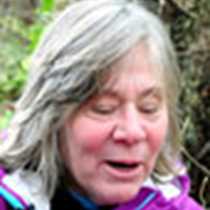Astoria, Oregon
By tracing the western river route of the Corps of Discovery, we have now reached the westernmost point of their explorations. Luckily for us, the day began with a cold rain, so we could appreciate the difficulties our heroes Meriwether Lewis, William Clark and company experienced in mid-November two centuries ago. Their campsite was a desperate perch inundated by tides and wind-blown seas along the north bank of this great river, just opposite our pleasant dock.
Astoria, a charming historic seaside town, is the oldest settlement west of the Mississippi, with traders sent by John Jacob Astor arriving in 1811. After a captivating maritime history experience at the Columbia River Maritime Museum, we journeyed to Fort Clatsop National Historic Park, the winter home of the Corps of Discovery. Following the remarkable vote that included Clark’s man servant York and the young Shoshone woman Sacagawea, and at the suggestion of the local residents, the Clatsop Indians, the group paddled their waterlogged dugout canoes up the river, around the headland, across Young’s Bay and up the Lewis and Clark River to an area with a fresh water spring, good elk hunting and protection from the winter storms. The thirty-three members of the corps built Fort Clatsop in only eighteen days.
This afternoon, the skies partially cleared and the 360 degree views of the Pacific Ocean and the coast range from atop the Astoria Column were wonderful. Later, the Sea Lion sailed westward with the tide toward Cape Disappointment, where we enjoyed Heerman’s gulls wheeling in the air and dozens of brown pelicans plunge diving in the channel, while the backlit breakers of the Columbia River Bar added a dramatic dimension to our already beautiful view.
By tracing the western river route of the Corps of Discovery, we have now reached the westernmost point of their explorations. Luckily for us, the day began with a cold rain, so we could appreciate the difficulties our heroes Meriwether Lewis, William Clark and company experienced in mid-November two centuries ago. Their campsite was a desperate perch inundated by tides and wind-blown seas along the north bank of this great river, just opposite our pleasant dock.
Astoria, a charming historic seaside town, is the oldest settlement west of the Mississippi, with traders sent by John Jacob Astor arriving in 1811. After a captivating maritime history experience at the Columbia River Maritime Museum, we journeyed to Fort Clatsop National Historic Park, the winter home of the Corps of Discovery. Following the remarkable vote that included Clark’s man servant York and the young Shoshone woman Sacagawea, and at the suggestion of the local residents, the Clatsop Indians, the group paddled their waterlogged dugout canoes up the river, around the headland, across Young’s Bay and up the Lewis and Clark River to an area with a fresh water spring, good elk hunting and protection from the winter storms. The thirty-three members of the corps built Fort Clatsop in only eighteen days.
This afternoon, the skies partially cleared and the 360 degree views of the Pacific Ocean and the coast range from atop the Astoria Column were wonderful. Later, the Sea Lion sailed westward with the tide toward Cape Disappointment, where we enjoyed Heerman’s gulls wheeling in the air and dozens of brown pelicans plunge diving in the channel, while the backlit breakers of the Columbia River Bar added a dramatic dimension to our already beautiful view.




